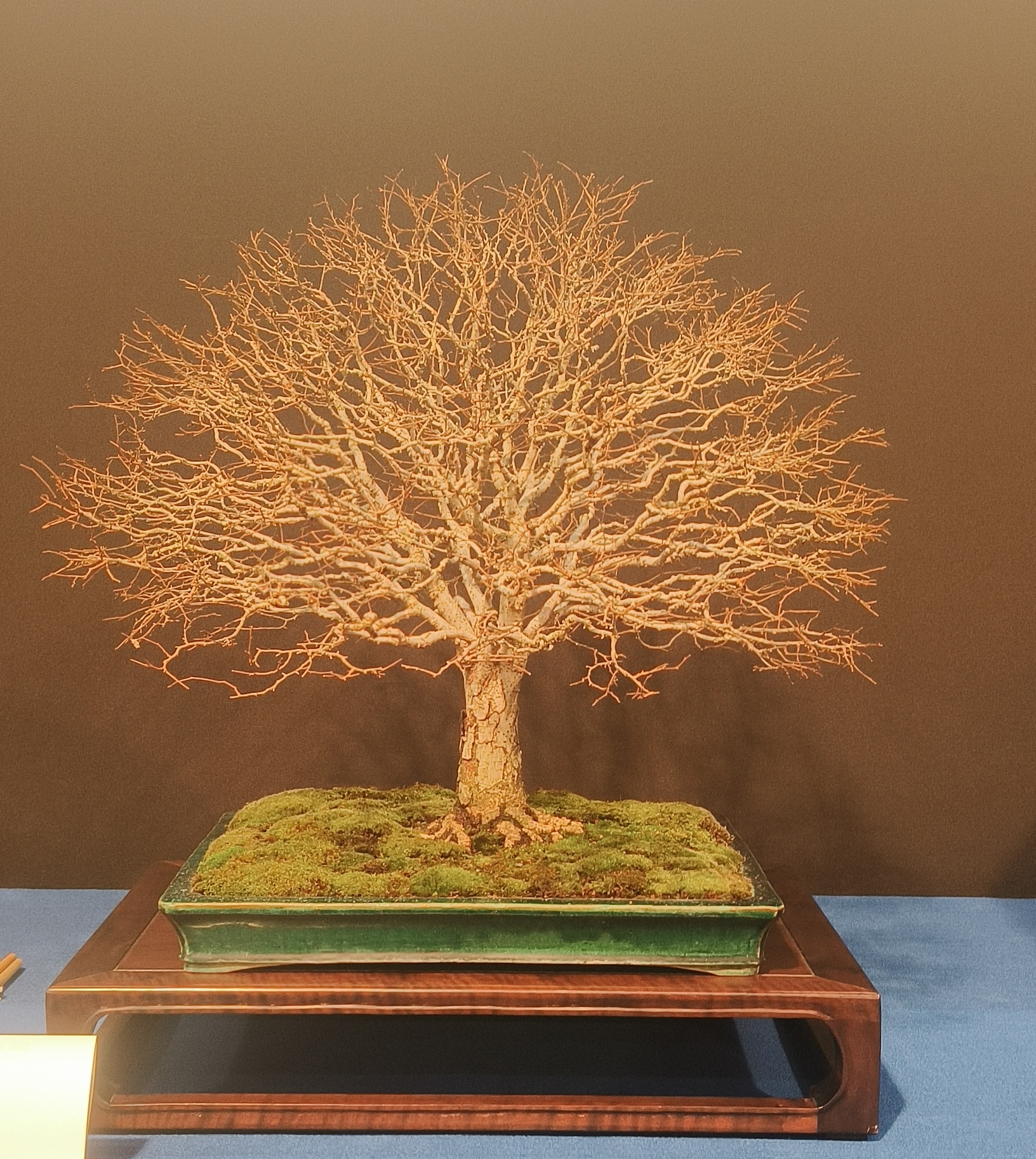Ficus Microcarpa Bonsai (Ficus microcarpa)
Pruning Technique:
Ficus microcarpa has small, oval leaves and dense branching, making it ideal for bonsai. Regular pruning helps keep the tree compact and encourages branching. Removing long shoots enhances a bushier appearance. Since Ficus recovers well from pruning, it's important to find the right balance between encouraging growth and maintaining its aesthetic shape.
Timing:
Prune your Ficus microcarpa in spring and summer when the tree is actively growing and producing new shoots.
Mistake to Avoid:
Over-pruning can weaken the tree, especially if too many branches are removed at once. Use sharp tools to prevent damage.
Common Diseases:
Root Rot: Overwatering can cause root rot. Ensure the tree is in well-draining soil and avoid excessive watering.
Aphids: These pests can settle on the underside of leaves and hinder growth. Use a mild insecticide or remove them with a soap-and-water solution.
Juniper Bonsai (Juniperus)
Pruning Technique:
Junipers have dense, vertical growth, so trimming young shoots is essential to maintain a compact form. Wiring branches can help create a natural appearance. Only prune fresh new shoots, ensuring the tree retains its character.
Timing:
The best time to prune is in spring and early summer when new growth emerges.
Mistake to Avoid:
Junipers do not respond well to cutting older branches. Avoid removing too many old branches, as this can weaken the tree.
Common Diseases:
Fungal Infection (Botrytis): This fungus thrives in humid conditions. Ensure good air circulation and avoid overwatering.
Root Rot: Junipers are prone to root rot if the soil remains too wet. Use well-draining soil.
Olive Bonsai (Olea europaea)
Pruning Technique:
Olive bonsai trees recover slowly from pruning. Avoid excessive pruning, especially during the growing season. Remove old, less productive branches and maintain the tree’s natural shape.
Timing:
Prune in late winter or early spring when the sap flow is low, and the tree is dormant.
Mistake to Avoid:
Olive trees are sensitive to over-pruning, especially during the growing season. Avoid cutting too much at once, as this can stress the tree.
Common Diseases:
Olive Tree Fungus (Pythium spp.): This fungus causes root rot. Use well-draining soil to prevent infection.
Powdery Mildew: A white, powdery substance on leaves may indicate mildew. Ensure good air circulation to prevent it.
Acer Bonsai (Maple)
Pruning Technique:
Maples are known for their delicate branching. Prune to maintain the desired shape and remove dead or diseased branches. Respect the tree’s natural branching pattern while pruning.
Timing:
Prune in early spring, just before new growth begins. This ensures the tree retains energy for healthy new shoots.
Mistake to Avoid:
Avoid pruning during summer or the growing season, as the tree requires too much energy for recovery.
Winter Pruning:
Winter is an excellent time to remove dead or weak branches. This prevents them from affecting the tree’s health as
temperatures rise.
Common Diseases:
Verticillium Wilt: This fungal disease blocks the sap flow and causes leaves to yellow. Remove infected branches immediately.
Aphids: These pests can damage leaves and leave a sticky residue. Use an insecticide to control them.
Zelkova Bonsai (Zelkova serrata)
Pruning Technique:
Zelkova has fine branches and an elegant curved shape, making it visually appealing. Trim young shoots to maintain shape and encourage branching. Avoid excessive pruning of older branches to preserve the tree’s natural form.
Timing:
The best time to prune is in early spring, before buds start to swell, allowing the tree to produce fresh new growth.
Mistake to Avoid:
Zelkova is sensitive to over-pruning. Avoid removing too many branches at once, especially older ones, as recovery can be slow.
Winter Pruning:
Winter pruning helps maintain a healthy structure. Remove dead or weak branches and refine the tree’s overall shape.
Common Diseases:
Leaf Spot Disease: A fungal infection that causes spots on leaves. Remove infected leaves and ensure proper air circulation.
Scale Insects: These pests disrupt sap flow and leave a sticky residue. Wipe them off or use an insecticide.
Conclusion
Pruning is an essential part of bonsai care, not just for maintaining shape but also for the health of your tree. By applying proper pruning techniques and identifying common diseases early, you can enhance the beauty and longevity of your bonsai. Always use the right tools and work patiently to keep your bonsai in top condition!
"Give your bonsai the perfect shape! Discover our high-quality Japanese bonsai wire, stylish bonsai pots, and premium soil for healthy growth and perfect styling."
